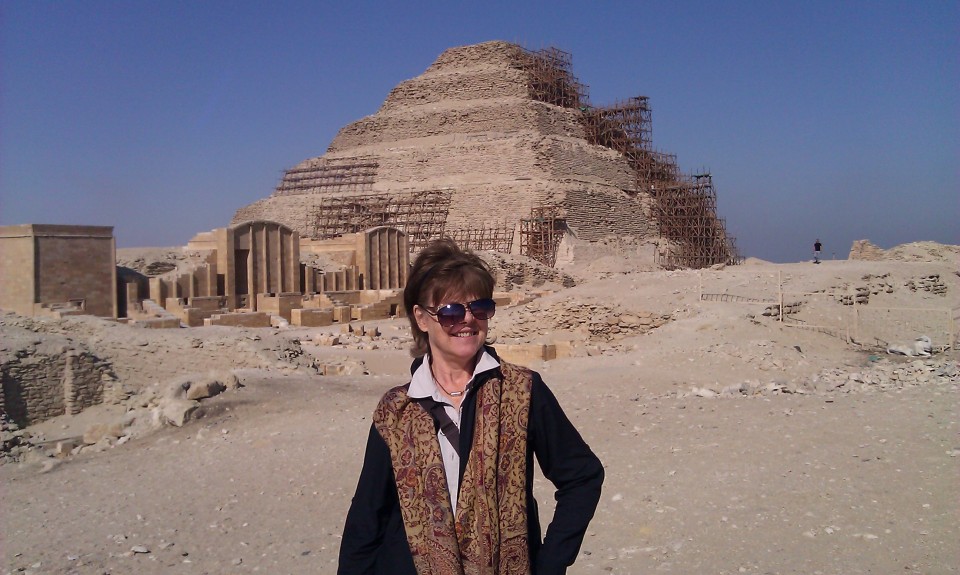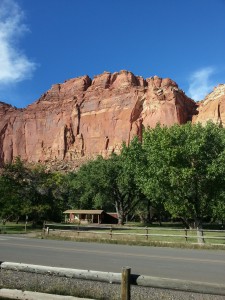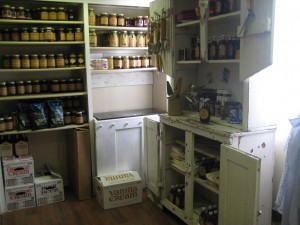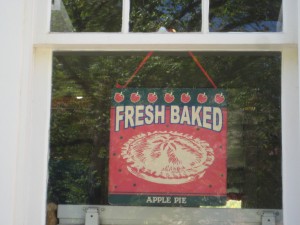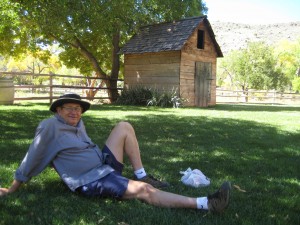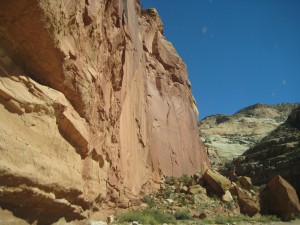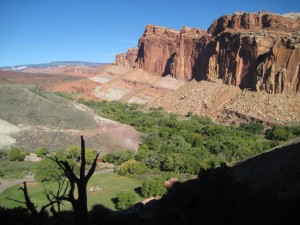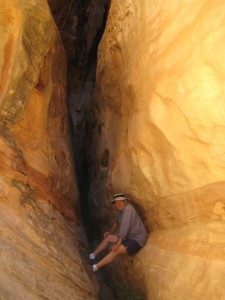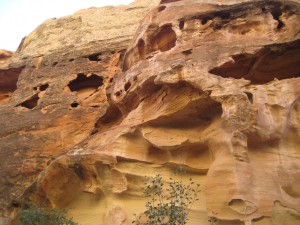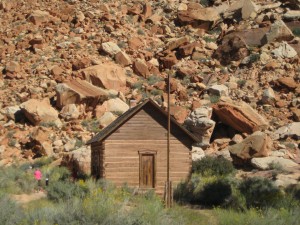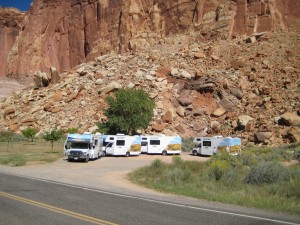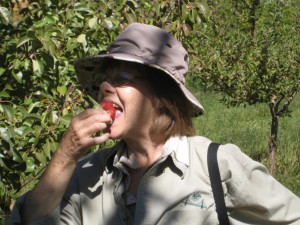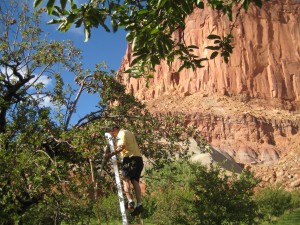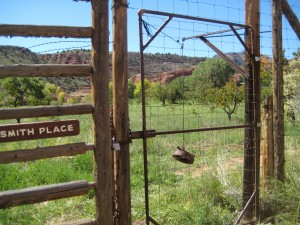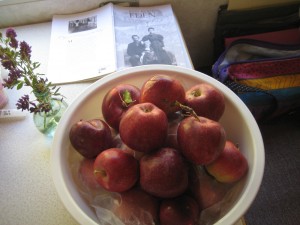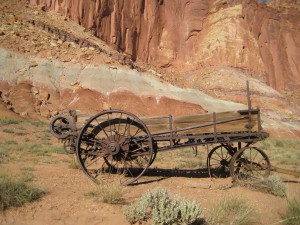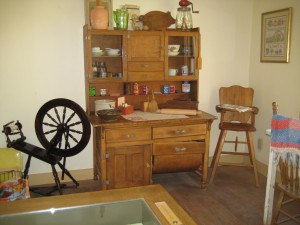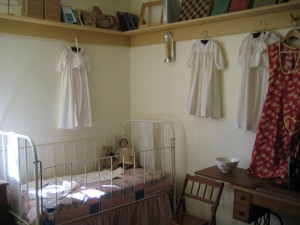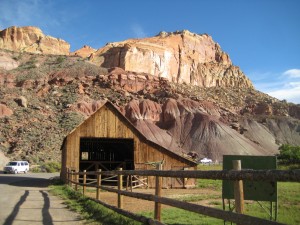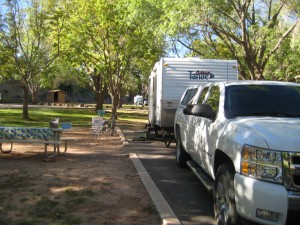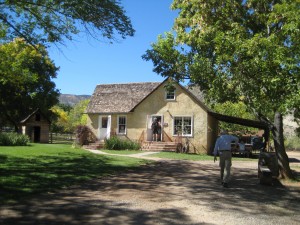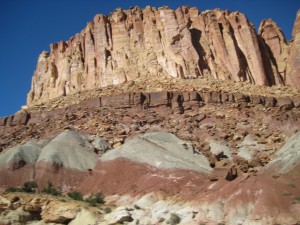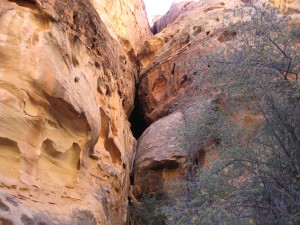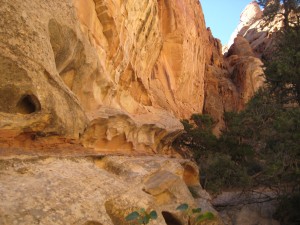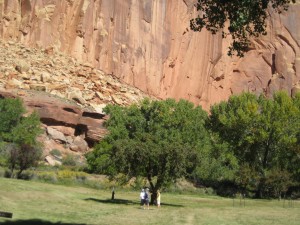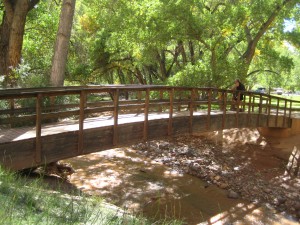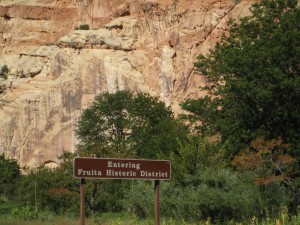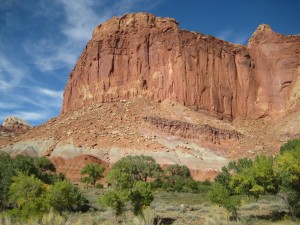Imagine a cinnamon nut scone fresh from the oven with a cup of hot coffee/chocolate on a warm, fall day enjoyed while laying on the green grass under the shade of a tree. We are at the Gifford Homestead in Capital Reef National Park, a replica of a pioneer home. Its shelves are lined with bottled jams, jellies, peach, pumpkin and apple butters, salsas, cherry topping and delicious homemade foods representative of what the early residents of this valley would grow and can. On either side, sandstone cliffs rise in patterns and colors of crimson and cream, rock canyons that swirl and wave in intricate designs.
Our first morning in camp, after a hearty feast, we tackled the winding trail just steps from our camp that climbed the rock walk to Cohab Canyon. The rock wall was still in shadow, even though it was 10 am, so it was cool as we ascended. The trail was steep and scattered with rocks as big as a house, huge, massive rocks perched so precariously it felt like a gentle nudge would send them careening down to the valley below.
After the strenuous hike on switchbacks to the top, we viewed Fruita Campground on the valley floor; it looked like miniature trailers and cars under the trees. We descended on the opposite side into a canyon where the sun was beginning to warm the canyon floor. Slot canyons to either side beckoned with their narrow passages. We felt exuberant in this insulated, pristine wilderness. Lizards scrambling over the rocks appeared to be our only companions. We eventually descended to Hwy. 24 which follows the Fremont River, a small, dirty brown river (that can turn into a raging torrent) that helped to shape the canyon.
Walking along Hwy. 24, we came to the Fruita Schoolhouse, a small, one-room school that housed as many as 26 students from 1st – 8th grade. The children only went to school during the winter months as they were needed for planting and harvesting during the rest of the year.
Further up Hwy. 24, we stopped at Jackson Orchard, where visitors were encouraged to pick ripe apples, weigh them, leave $1 per lb. in the steel container and enjoy what they could use. After our morning hike, nothing tasted quite as good as a crunchy, fresh-picked apple in the dappled shade of the orchard. Being the only pickers in the orchard was also a treat. We dragged the ladder from tree to tree and pulled the red jewels off the tree, sweet apple smells filling the air. We ended our hike with scones and coffee at the Gifford Homestead.
In the evening, I scrubbed and sliced some of the apples and put them on the stove to stew with water, sugar and cinnamon. I can’t quite describe why the stewed apples tasted like heaven. Being able to pick apples right off the tree and cook the fruit the same day seemed to connect me with the earth and the cycle of life. It also helped to know the pioneers lived this way. It was the best darn treat of our trip so far. We missed terribly access to good fresh fruits and vegetables on this trek across Utah, perhaps another reason why the apples were so appreciated. We had managed to purchase tomatoes and cucumbers at the spare (one table) Farmers Market in Escalante because we got there early and were fast.
The orchards in Fruita were planted by the Mormon settlers in the late 1800’s — at the most ten families. Often these Mormon “families” had 12, maybe thirteen, even as many as fifteen children so the community was larger than it might sound. As everywhere else in Utah, struggling to make a life in Fructa was hard. “This was the country the Mormons settled… Its distances were terrifying, it’s cloudbursts catastrophic, it’s beauty flamboyant and bizarre and allied with death. Its droughts and its heat were withering. Nobody else wanted it, nobody but a determined and God-supported people could live in it.” Wallace Stegner. Mormon Country
To the Mormon settlers, home was not just a shelter made of lumber, but a construction held together by faith. The land could be unkind to those attempting life here. Searing heat, bone-chilling cold, dusty drought, and devastating floods caused early pioneers to move hard-won settlements. Other towns sprang up nearby and failed, but the Mormons held on abiding by faith. Diseases like smallpox and diphtheria took their toll. The girls married as early as fifteen and oftentimes were mothers before they were sixteen and might have born a child every year for the next 12 to 13 years. They were completely isolated in the canyon so they were self reliant and community oriented, taking care of one another, marrying each other, praying, dancing, singing and socializing together. If someone fell ill, they often used home remedies in caring for one another. A midwife helped the mothers give birth; rarely was a doctor in attendance.
The orchards have been preserved for visitors when Fruita became part of the National Park system. Only a few of the original settler buildings remain. The Gifford Homestead was once the actual home of several pioneer families. An old barn remains and a blacksmith shop but none of the Mormon settlers live in Fruita anymore. Deer roam through the orchards and campgrounds. It is a picturesque and sweet scene in late September, in the upper 70s during daytime and upper 50s at night. The trails are numerous taking you back in the canyons and the scenic drives are awesome. If I had the strength, biking would be my preference to see the canyon and we did pass a few intrepid bikers. There is no store, firewood, Wifi or cell phone coverage but there are lots of very large trailer rigs, ours included. The campground has no hookups. There is a dump station.
With no electricity or Wifi, we sat under the stars in the evening and read aloud chapters of “Desert Solitaire” by Edward Abbey. It made the book all the more meaningful to feel we were a part of this desert and canyon and universe in the stillness of a dark night at Capitol Reef. It is an odd time to be so removed as news coverage is so limited. However, making purchases at the Gifford House today, I was caught up in a conversation about whether the Park would be open the following day. The big question on everyones mind: Will the United States government shut down at midnight.
October 1. We awoke to find the Rangers had been busy this morning posting signs at the trailheads, the visitor center and at the entrance to the park: CLOSED Due to the Shutdown of the Federal Government. We packed the trailer and were sad to say goodbye to this beautiful park with its majestic domes, arches and unusual canyons striking in their beauty, the orchards, and the ghosts of pioneer Mormons.
I read the rocks in Capital Reef record nearly 275 million years of history, rivers and swamps, Sahara-like deserts, and shallow oceans. Within the last 20 million years, an uplift of the Colorado Plateau occurred and this, along with erosion, water and wind, rock falls and rock creep shape the landscape today. It is truly unbelievable. I certainly felt some anxiety about rock fall, as massive boulders are perched everywhere as you drive the paved Scenic Drive and they look like they were literally stopped in their tracks and might continue to fall at any moment. Side roads to Grand Wash and Capitol Gorge take you even further along the reef where water has cut completely through the towering walls of stone. It feels like you are being swallowed up by the earth as you descend. As we travel from west to east across Utah, each National and State Park becomes my new favorite. Today Capitol Reef definitely tops my list.
If Capitol Reef was at one time rivers and swamps, then transformed to a desert, then covered with an ocean, and today is the rocks and canyons we see today, doesn’t that mean climate change is a given?
